The Amish have been living off the grid for decades, prospering without supermarkets, electricity, or other conveniences. The Amish have mastered full self-sufficiency, while the rest of society relies on intricate supply systems and technological conveniences. Their style of life is about assuring survival in a world that could end at any time, not merely about rejecting technology. Additionally, there are many lessons to be learned from Amish self-sufficiency methods if you wish to be ready for the next calamity.
Farming Without Modern Machinery
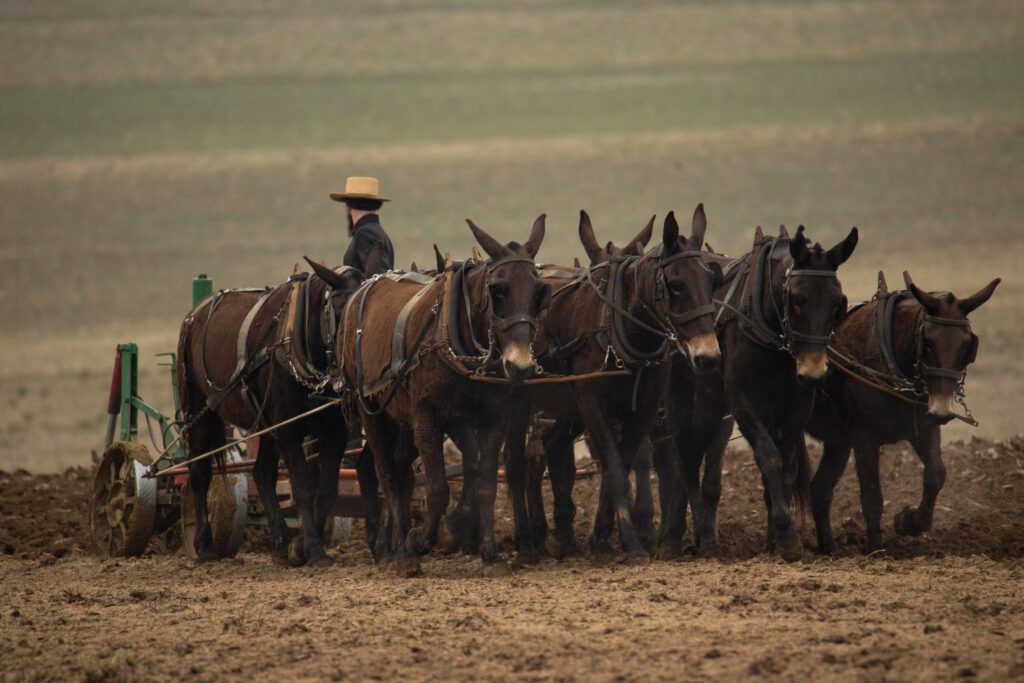
Large tractors, chemical fertilizers, and fuel- or electricity-powered irrigation systems are all examples of how technology has entirely taken over modern agriculture. The majority of large-scale farms would fail in a matter of weeks if the grid were to fall down permanently. But for centuries, the Amish have farmed without the use of contemporary equipment. They use heirloom seeds, organic compost, and horse-drawn plows instead of diesel, synthetic chemicals, or intricate irrigation systems. This strategy guarantees that their farms continue to be productive regardless of external events, in addition to maintaining their independence.
Crop resilience is one of the main benefits of using traditional Amish skills in agriculture. The Amish employ heirloom crops, which are cultivars that have been meticulously maintained for generations, as opposed to genetically engineered seeds that require particular fertilizers and pesticides to thrive. These seeds are more resilient to disease and drought because they spontaneously adapt to their surroundings. Without the use of artificial fertilizers, the soil remains healthy and productive when combined with crop rotation, which involves growing various crops in different fields every season. It is a system that is intended to endure for many generations, not just one crop.
Amish farming methods are designed for survival, not just sustainability. Contemporary farming methods will not function in a real grid-down situation when electricity and fuel are unavailable. Amish farms are able to continue producing food eternally, while industrial farms rely on freezers, irrigation pumps, and mechanical harvesting. They never have to depend on deteriorating infrastructure because they plant, care for, and harvest by hand or with the aid of their horses. When SHTF strikes, this type of Amish self-sufficiency method is about more than just farming; it’s about food security.
Powering a Home Without Electricity

A prolonged power loss would put most people’s lives to a complete halt. Everything becomes difficult without power, including cooking, heating, and lighting. However, nothing much changes for the Amish. For years, they have lived without electricity, using kerosene lamps, hand pumps, and windmills in place of contemporary conveniences. The Amish demonstrate that it is possible to survive without being connected to the system by going about their daily lives while humanity frantically looks for alternate energy sources during a blackout.
Some Amish villages use solar power, albeit only in certain areas, despite their rejection of public energy. They restrict their solar use to necessities like emergency lighting or refrigeration rather than attempting to sustain a contemporary lifestyle off the grid. They are able to maintain their independence without becoming reliant on contemporary energy sources because to this precise balancing. They are aware that if your entire farm is dependent on solar power, a single piece of equipment failure might leave you without anything, as many survivalists have discovered the hard way.
Long-term survival depends on water independence in addition to electricity. The Amish still use gravity-fed systems and hand-pumped wells, but most homes now use electric pumps to get water. Even in the case of an EMP or infrastructure failure, these manually operated wells guarantee access to fresh water. Larger farms can avoid using municipal water connections by using cistern storage and rainfall gathering to ensure a consistent supply. Every prepper should take into account this degree of water security since it eliminates the single largest dependency that most people ignore: clean drinking water.
With off-grid lighting, heating, and water management, the Amish are almost impervious to blackouts, fuel shortages, or economic downturns. Although most people are terrified of losing power, many have already adapted sustainable alternatives into their daily lives. It is possible to live peacefully without relying on brittle modern infrastructure thanks to Amish self-sufficiency methods in energy and water management.
Storing and Preserving Food Like the Amish

Food security is more than just having a well-stocked pantry; it also means ensuring that food lasts without relying on electricity. While most people nowadays freeze things, the Amish have evolved dependable, long-term preservation methods that do not require contemporary machines. They’ve used procedures honed over centuries to keep food fresh throughout the year, ensuring that their families never go hungry.
Canning and pickling are fundamental Amish self-sufficiency methods. Instead of using freezers, they preserve meats, vegetables, and fruits in glass jars using vinegar, salt, or natural fermentation. This technique preserves nutrients and increases shelf life, ensuring a consistent food supply even when fresh ingredients are scarce. Unlike store-bought canned products that include preservatives, homemade Amish preserves maintain their nutritious content and flavor for months or even years.
Beyond canning, most people nowadays don’t realize that root cellars offer a year-round, natural storage option. Because of the consistent temperatures maintained in these subterranean spaces, apples, potatoes, carrots, and onions can be kept fresh for extended periods of time without refrigeration. A forgotten survival technique that helped previous generations survive harsh winters is the ability to preserve meat without a freezer by preserving it in rendered lard, which naturally seals it against bacteria. These methods demonstrate that long-term food storage without ever opening a refrigerator is achievable given the correct information.
Herbal Medicine & Natural Remedies

The Amish have mastered the art of using nature’s medical cabinet to treat illnesses in a society without contemporary pharmacies. Herbal tinctures, poultices, and medicinal teas can make the difference between healing and suffering when you don’t have access to a pharmacy. The Amish cultivate and harvest their own medicine, a sustainable practice that has maintained the health of their communities for decades, in contrast to many contemporary preppers who rely on hoarding prescription drugs that eventually run out.
“Amish Ibuprofen,” a potent concoction of raw honey, apple cider vinegar, and therapeutic herbs, is one of the most well-known treatments in Amish homes. This all-natural remedy relieves headaches, joint pain, and inflammation. Some variations contain cayenne pepper to increase circulation and reduce muscle pain, or turmeric for additional anti-inflammatory properties. This cure has fewer adverse effects than over-the-counter medications, and the ingredients can be made or foraged without the assistance of a pharmacy.
Amish homesteads are known for their medicinal gardens, which guarantee that they always have access to plants that may heal. A must is comfrey, which is well-known for its capacity to heal wounds and lessen swelling. Peppermint aids in nausea and digestion, while chamomile soothes nerves and promotes sleep. The Amish employ their meticulously farmed plants, drying and conserving them for year-round use, rather than rushing to the hospital for minor diseases.
Amish communities make their own syrups and poultices with items like elderberry, garlic, and ginger to treat common ailments like colds, coughs, and infections. Plantain leaf and clay poultices help remove infection from wounds, while honey-based cough syrups flavored with thyme or wild cherry bark are effective expectorants. Their strategy aims to naturally strengthen the body rather than merely treat symptoms.
Many of these herbal secrets have been passed down for centuries. If you’re interested in natural remedies and survival medicine, check out this guide that breaks down what the Amish use to stay healthy, without pharmacies.
Building & Crafting Essential Tools by Hand
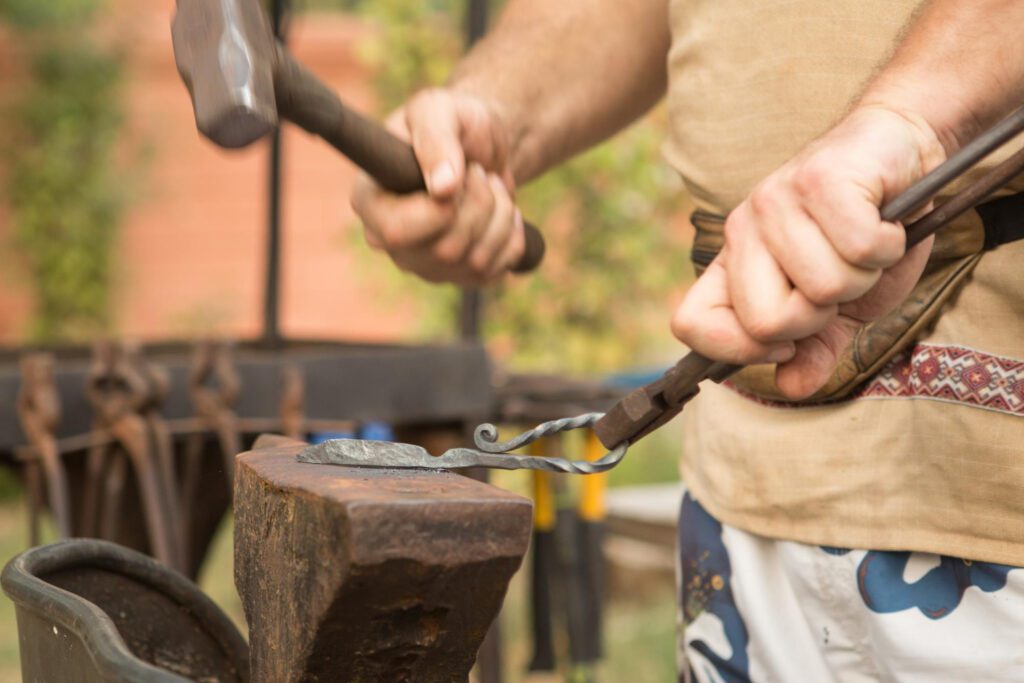
Nowadays, most individuals just replace broken items or call someone to fix them. The Amish don’t have that luxury; they make and maintain everything they need using traditional craftsmanship, woodworking, and blacksmithing. They construct everything themselves, whether it’s a robust wooden barn, a dependable wagon, or a basic hand tool. By removing reliance on shops and supply channels, this self-sufficient strategy guarantees that people can continue to operate their homes and farms regardless of external events.
Repairing your own equipment and structures is a survival skill that is becoming increasingly uncommon. Most people are unaware of their vulnerability until something important breaks and they are unable to fix it. In contrast, the Amish are able to fortify their own houses, sharpen their own swords, and make new parts as needed. Gaining proficiency in these areas eliminates your dependency on contemporary production and guarantees that you won’t ever be vulnerable to supply shortages or a collapsing economy.
Community Survival
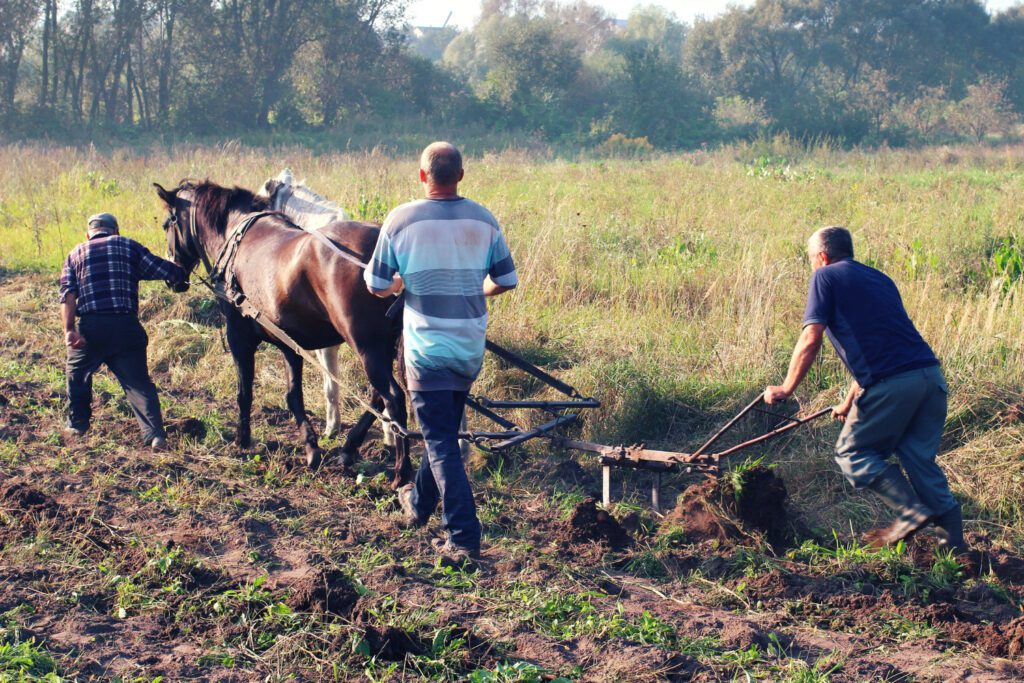
Surviving alone is a losing battle, regardless of one’s level of preparation or competence. The Amish are aware that genuine self-sufficiency requires cooperation rather than isolation. Every member of the community contributes to the survival of the group, and their way of life is based on mutual aid. They rely on one another in difficult times rather than on outside aid or the government. Many contemporary preppers ignore this survival principle of teamwork and shared responsibility.
Barn raising is one of the best illustrations of Amish communal survival. Amish families work together to construct a whole barn in a single day rather than employing contractors or waiting months for a construction crew. Food, healthcare, and security are all based on the same idea: if one family is having trouble, others aid. Survival depends on the strength of others around you, not simply on your own abilities. The Amish have established a structure that guarantees long-term survival through shared resources, work, and knowledge, in contrast to today’s disjointed society where many individuals don’t even know their neighbors.
This is a crucial lesson for preppers. Being a lone wolf will only get you so far in a long-term collapse. More hands are available to assist with food production, shelter construction, and security when there is a robust survival society. When calamity comes, the Amish model of self-sufficiency through collaboration isn’t just a holdover from the past; it’s a tactic that could mean the difference between surviving and barely surviving.
In a true survival situation, going it alone isn’t an option. The Amish model of self-reliance and mutual aid is key to long-term survival. Learn how to apply their methods here.
In addition to upholding ancient customs, the Amish provide a live example of how self-sufficiency is achievable in the modern world. Because they rely on tried-and-true survival strategies rather than brittle contemporary systems, their way of life has remained unaffected by supply chain breakdowns, economic downturns, and blackouts. Every survivalist may benefit from their robust lifestyle, which includes everything from water independence and handcrafted equipment to off-grid farming and food preservation. These are not only outdated customs; rather, they are tried-and-true survival techniques that could make the difference between surviving and surviving a protracted crisis.
Adopting the greatest strategies from people who already survive without modern infrastructure is the best course of action for everyone who is survival-minded in a world when relying on it poses a serious risk. Learning from the Amish involves developing the skills necessary to live in the event that technology fails, not abandoning it. The solutions are currently available, whether your goal is to create a robust survival society, protect your food supply, or produce off-grid power. It’s time for the rest of us to catch up to the Amish, who have been leading a preppy lifestyle for centuries.
If you want to be truly self-sufficient and prepared for any crisis, why not learn from the best? Check out The Amish Ways, it’s packed with practical skills that modern society has forgotten.
Serious preppers know that staying ahead means learning from past mistakes and refining their strategies. That’s why I’ve created a free ebook with a complete breakdown of the must-know prepping skills and survival tactics for 2025. Get Your Free Prepping Guide Now

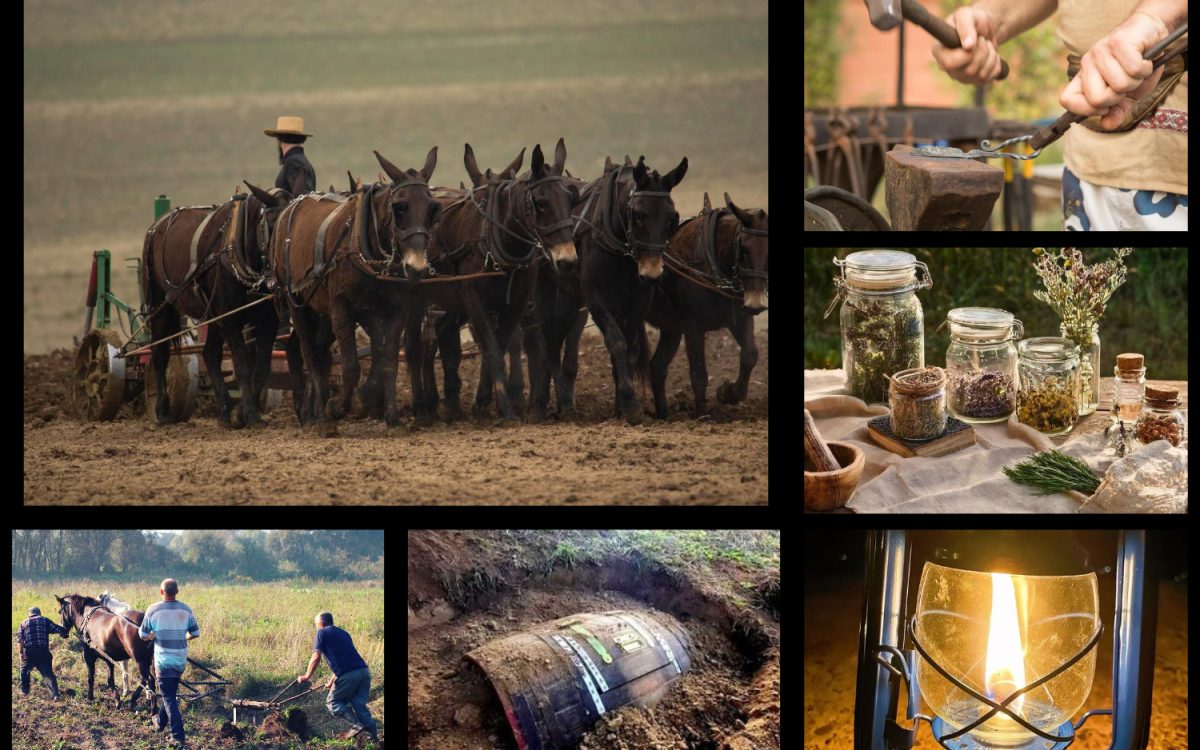


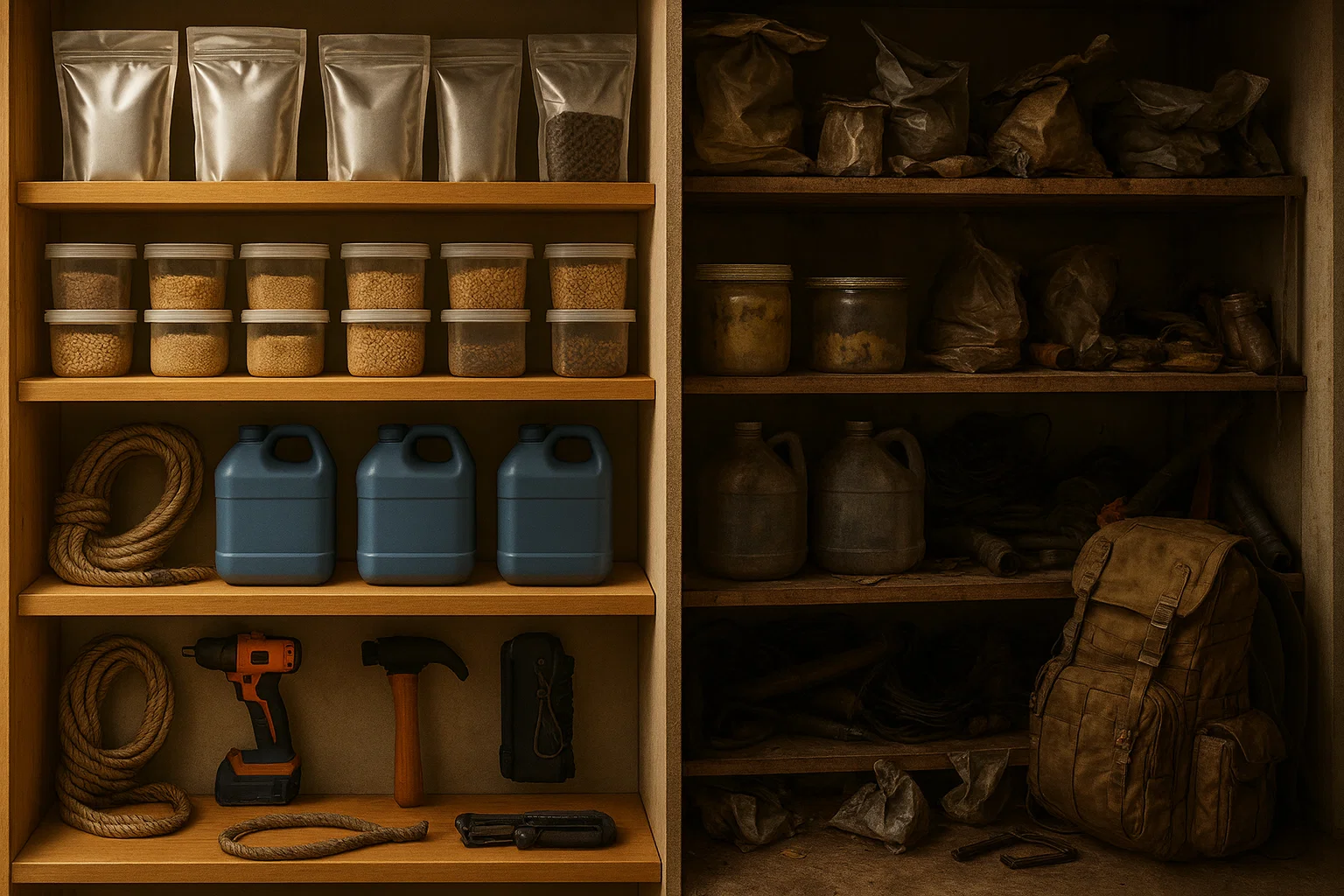


















1 Comment
The Amish have a very wide repertoire of skills, in terms of technology they depend less than the English (as they call those who are not Amish) but they depend on supplies from the outside world, the gas for lighting or the fuel for their lamps is not manufactured by them, but rather they obtain it from the outside world, in a SHTF scenario, without a doubt the impact on their way of life would be less affected than ours.